“Growing old is mandatory; growing up is optional.” – Chili Davis.
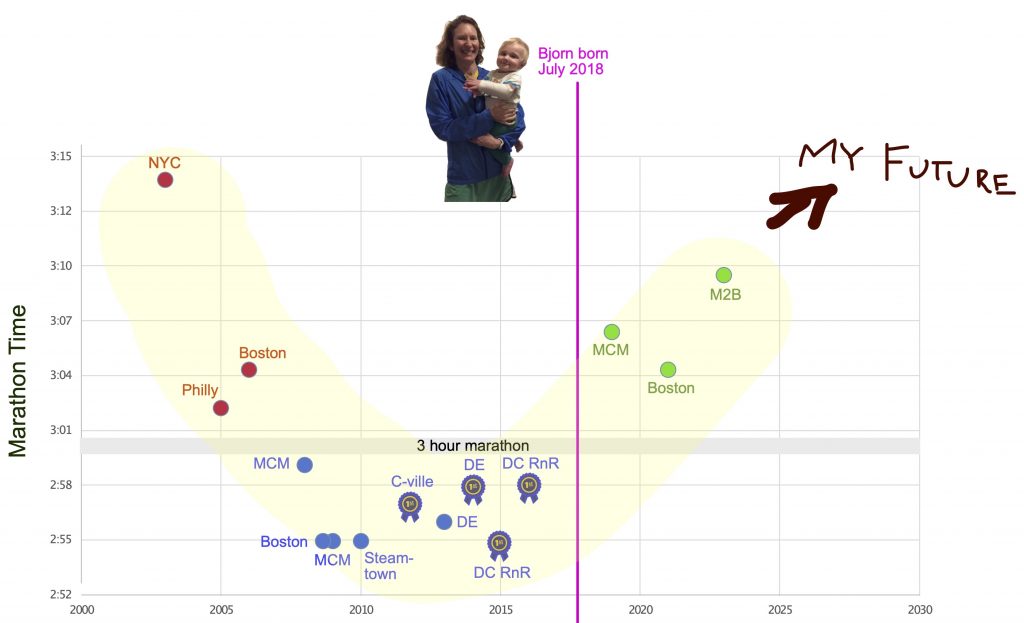
Going skydiving would’ve been easier…..
Aaron! I dashed into the kitchen. Look!
Aaron looked like he’d just been overrun by squirrels. What am I looking at?
It’s gray! I cradled a curled specimen of hair in my palm and offered it to him like a child. Tears streamed down my cheeks.
Aaron stammered, avoiding the landmines hidden beneath any woman’s conversation that touches on her looks.
I knew that in my 40s I would hit middle age, go through menopause, turn gray, and lose my speed. But that didn’t mean I was ready for it. I now understood why men panic-buy sports cars in their 40s. Anything to stop the downward skid. But my mid-life crisis package would not include convertibles, motorcycles, skydives, or breast implants. I stared in the mirror, then back at my palm, and realized there was only one way to face down middle age: lace up and race another sub-3 hour marathon.
There were just a few problems. One, my last sub-3 marathon was 8 years ago at the DC Rock n Roll Marathon in March 2016, where I paced my friend Trevor to his first sub-3 hour finish, and also went on to win the race myself. Two, I was already 43 years old, well into the Masters age category where the wheels come off. Three, I was a mom with a young child and limited time to train or perform self-care.
I was a consistent sub-3 hour marathon runner from age 27 to 35. I won the DC Rock N Roll Marathon twice, the Delaware Marathon, the Charlottesville Marathon, and ran sub-3 at Boston, Marine Corps, and Steamtown. Then, after I got married and welcomed my son Bjorn, my marathon times floated above 3 hours for the first time in 13 years. I met this with a sense of doom, realizing after decades of getting stronger and faster, I was now in decline. My friend Sean welcomed me as the newest member of the “old and slow” club.
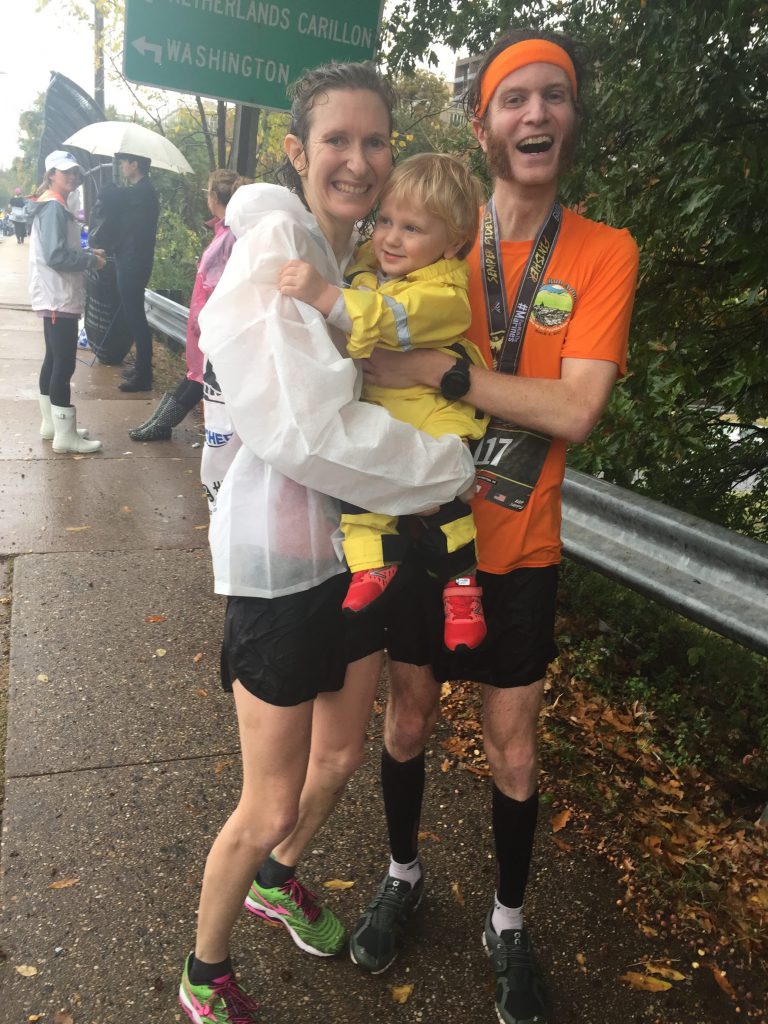
Now I know how Greg Lemond felt at the beginning of the EPO era in cycling…..
The arrival of carbon-plated “super-shoes” at the 2020 Tokyo Olympics poured salt on the wound. Just as my speed was fading, everyone else was buying it for $250. Nearly everyone at the 2021 Boston Marathon wore the Nike Vaporfly. The sudden change in pace of people around me threw off my racing instincts. “Cheater shoes” Aaron called them, referring to their enhanced biomechanics. When Aaron finally bit the bullet and bought super-shoes this year, the advantage was dramatic: about 15 seconds per mile, which adds up to 6-to-7 minutes in a marathon. That would have turned my 3:04 Boston Marathon from 2021 into a sub-3 performance. But I wouldn’t have counted it.
Super-shoes ripped the joy out of competition, so I took an 18-month sabbatical from the marathon and found new adventures on the trails. I ran Hellgate a second time. I recruited Nora to ride-n-tie. I even learned to mountain bike on West Virginia’s single-track. I found joy in social running and revived the WUS Tuesday night trail run after it died during the COVID-19 pandemic. I joined a new Friday morning women trail running group organized by Barry (who is not a woman, but appears to attract them in droves, for reasons that are still up for discussion). Last summer, I headed out to Silverton, Colorado, to pace Trevor at Hardrock in what would be my first VHTRC trip without Aaron.

“Teamwork Makes the Dream Work!” – Aaron Schwartzbard
Trevor and I made a deal: if I paced him at Hardrock in July, he would pace me to a sub-3 marathon the next fall. We settled on the Richmond Marathon in November, where Trevor set his PR (2:53) in 2016. Coach Aaron approved my pared-down training plan: five long runs during September and October sprinkled with a weekly dose of light speed work. With four children under the age of 6, Trevor would join me when he could.
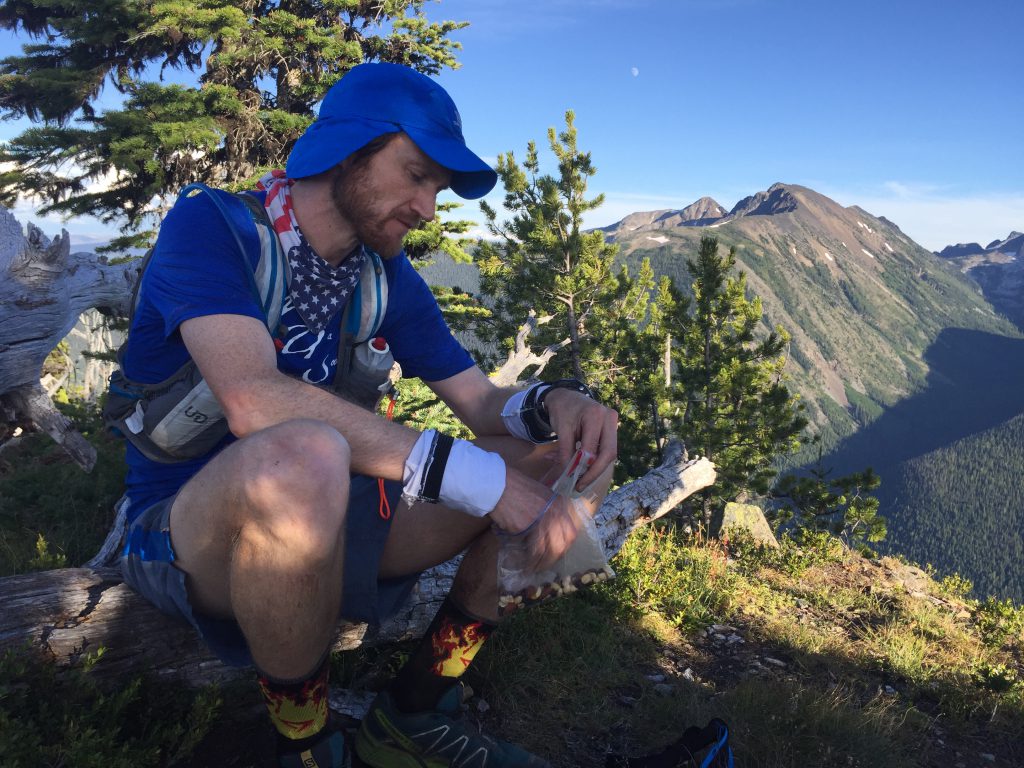
Two other Wussies, Mike and Anthony, also signed up for Coach Aaron’s Richmond Marathon training plan. Katie and Steve joined the party too. Barry’s FOMO got so bad he almost reversed his vow never to run another marathon again. Then sense kicked in.
As soon as training kicked off in September, Trevor was downed by illness. Four kids is TOO MANY kids. But new Wussies Mike and Anthony stepped up so I never had to run a long run alone. We were the Breakfast Club of marathon training. Anthony was the pot-smoking hippie. Trevor was the Mr Perfect prep school golfer. Anthony’s friend Duy was the fun gay Asian (which was not in Breakfast Club, to the detriment of the movie). Mike was the quiet guy in the corner silently trolling everyone.
For the first time in more than a decade, marathon training was fun again. The guys laughed at my stories and followed my routes. One fine October evening, Mike supplemented my marathon training by taking me out clubbing until 3AM on U Street. Because running a sub-3 hour marathon means learning how to be 27 again.
By late October, Coach Aaron certified me “trained.” For a girl who never trained for previous marathons, I considered my five long road runs of at least 16 miles, sprinkled with a couple short track workouts, to be a victory in and of itself. Aaron spent years trying to convince my younger self that my marathon PR of 2:55 was soft and with the slimmest amount of training I could break 2:50, but I was skittish. I knew too many women over the years who overtrained, lost their periods, under-ate, over-trained, and damaged their bodies. I erred on the side of caution and self-preservation. But by age 43 (and with some good therapy during the COVID-19 pandemic), I was starting to get past old mental blocks.
I assume no one from Dojo reads my blog
Aaron and I are opposites. He’s an introvert, I’m an extrovert. He’s methodical, I’m whimsical. He’s vegetarian, I’m a carnivore. He trains diligently for marathons, while I do one confidence-boosting long run (at least 13 miles) a couple weeks before the race and declare myself fit to go. But we align squarely on our philosophy of marathon training. We had the same advice for young Anthony who was training every day at his expected marathon pace (6:30) on the same stretch of Beach Drive until he was so bored and burned out that he swore off marathons forever. Here are the “Marthon” Cardinal Rules for Marathon Training:
(a) Long runs should be a comfortable clip, neither excessively slow nor fast, maybe 60-90 seconds slower than expected race pace. You should be able to converse comfortably. If you’re feeling good towards the end it’s okay to pick up the pace for the last 4-5 miles, just don’t do anything that is going to require more than a day or two recovery. Because later in the week….
(b) You should do a session of speed work each week. Nothing arduous. You don’t need to do mile repeats. The purpose is to improve running economy and improve your biomechanics and efficiency of stride. If you’re having difficulty getting the right body conformation during these pick-ups, you might need to include some plyometrics (see instructional videos on YouTube). I typically do not wear a watch or record my runs, but for Anthony’s sake I began to wear one and post my activities on Strava, so he could see that light speed work could be as simple as three or four 800m repeats.
(c) The long run and the speed work are the two pillars of your training week that give you the most benefit. Focus on nailing those two days, and the other days are just recovery and endurance building. Fine to mix in some trail runs on those days. If you need to party, go out any night of the week EXCEPT the two important nights before the long run and speed work.
(d) Try not to lose weight during marathon training. Do not diet during marathon training. It may be tempting to believe that you’ll be faster if you can shed a couple pounds, but I’m afraid that ship has sailed by the time marathon training begins. Your body cannot handle the load of marathon training without complete fueling.
(e) You’re going to need super-shoes if you want to compete against others for prizes/BQs/OTs. If you’re going to wear super-shoes in the race, make sure you do at least one long run in them prior to race day.
(f) Train to run easy faster, not hard longer. You may notice killer times posted from training sessions on Strava are not necessarily predictive of performance on race day. Many marathoners take a training approach that focuses on running hard for longer. If they can run their desired marathon pace (say 6:30) for 12 miles, they try to extend the distance they can maintain that hard effort from 12 to 15 to 18 to 20 miles. This may seem logical and sequential, but no one can run at threshold for 26 miles, even the pros. Instead, train to run easy faster. Rather than building strength, build economy. Unfortunately, social media rewards impressive workouts more than running effortlessly. This is one way that the social media age can steer people in the wrong direction. One reason I generally don’t record my training on Strava is because to an outside eye my training would be very unimpressive. Even though marmots try very hard not to fall into the trap of comparing themselves to others and feeling inferior, social media sometimes makes that difficult.
(g) Haine’s Point is where marathon dreams go to die. Many marathoners swear by flat, fast training loops. But Aaron and I design hilly routes through Arlington and Georgetown to build strength. Your pace on a hilly course will look unimpressive on Strava, but you’ll find you have more strength in the final miles of the marathon where you need it most.
(h) Just to leave no rock unturned for Anthony doing his first road race, we also spelled out the 5 rules of marathon water stations. First, when you grab your dixie cup, pinch it at the top to avoid spillage. Second, do not drink yet! Take a couple strides into the middle of the road before slowing to drink. Otherwise you risk getting trampled by runners darting in and out to grab cups. Third, toss your cup to the opposite side of the road from the water station to avoid oncoming runners. Fourth, do not try to keep your pacing group intact during the water stations. Don’t worry if everyone goes their own way, just be patient and regroup after the water station.
Trevor is mortal
While Aaron and I focused on guiding the rookie Anthony, Trevor slipped through the cracks. Trevor is not a marathon rookie, with a PR of 2:53. Trevor’s is a WUS legend for winning every beer mile (in about 7 minutes on a non-traditional course) and miraculously finishing Hardrock last summer on no training. No one ever has to worry about Trevor. But he hadn’t done a marathon in a while. Lesson one: even the magically charmed T-Puff is human. Lesson two: you can pull yourself out of a hole in an ultra, but there is less margin in a marathon. Trevor paced the 3:15 group at Marine Corps three weeks before Richmond, which managed to pull off the double whammy of destroying his legs without building endurance. Questioning whether he could still manage sub-3 pace at Richmond, Trevor panic-bought super-shoes. With Aaron as shopping guide, Anthony and Mike followed suit. I supported everyone else’s decisions to buy super-shoes, but I resisted. I had to prove that, despite being in my 40s, despite being a mom, despite getting pummeled by the COVID-19 pandemic, I could still go toe-to-toe with my 27-year-old self.
For my future self, it’s worth mentioning that my legs felt cruddy in the weeks leading up to the marathon. I barely finished the NIH 5k, a casual run at work, because my legs were shot after helping Trevor pace 20 miles of MCM. Plus, I was fighting the bug going around our house and the November election had me down. But please, future self, take note not to freak out the next time my body feels drained going into race day. “Race magic,” Aaron promised me.
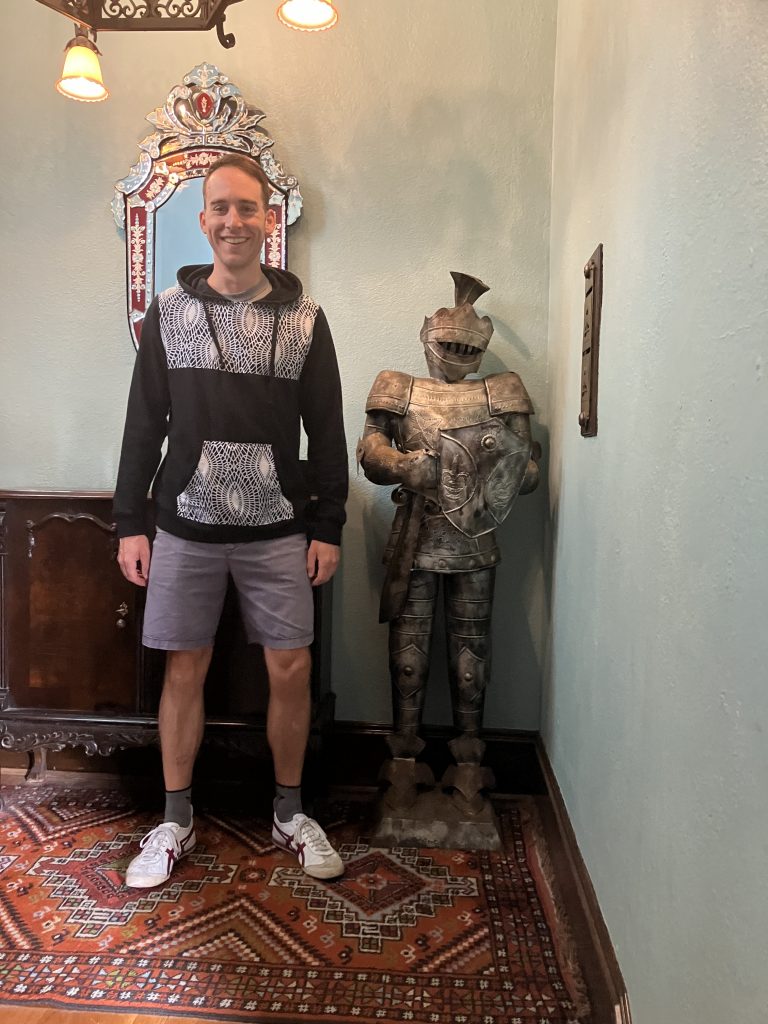
Driving down to Richmond with Trevor, my biggest fear was that my stomach would ruin the weekend for everyone. With Aaron home with Bjorn and Trevor jetting back to his brood right after the race, all I had was Mike or Anthony to whisk me to a hospital for an IV after the race (something I did routinely when I was younger, although less as I’ve aged and learned to manage my illness).
Trevor assured me Mike and Anthony were up to the task. WUS goes through boom-and-bust cycles as crops of young runners arrive and depart, temporarily joining the old guard of regulars, but our new crop of youngsters was a good one, and breathing new life into beer miles and bucket brigades.
The sun was shining when we arrived in Richmond, and I was charmed by everything, from Anthony’s quirky AirBnB “castle” to outdoor packet pickup at the Richmond Roadway (way better than ugly convention centers), to the perfect fall weather and easy-to-navigate city. I knew the running gods were smiling on us when Anthony announced that his Pacers running group friends had a hotel room blocks from the race start, where on race morning we could stash our clothes and defile their bathrooms. No shivering outside in port-o-potty lines!
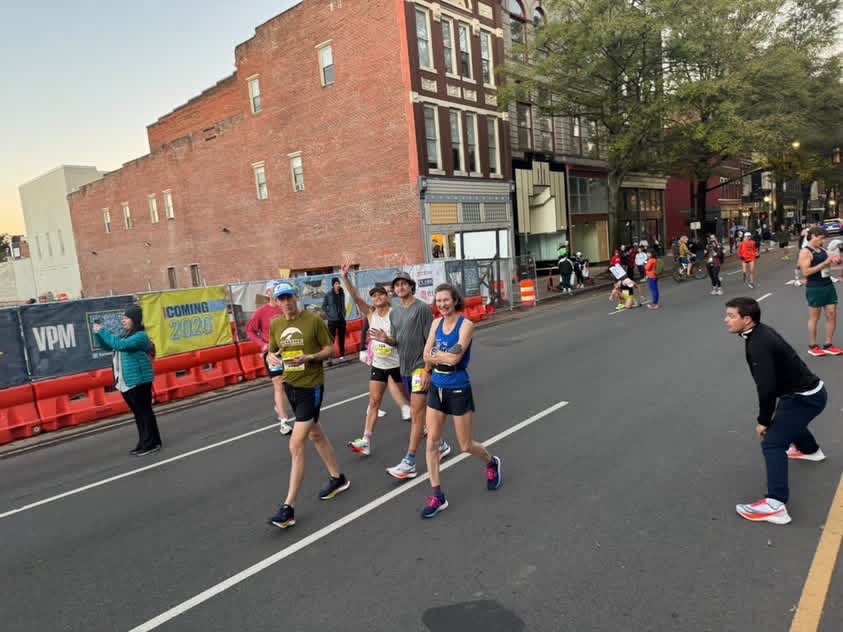
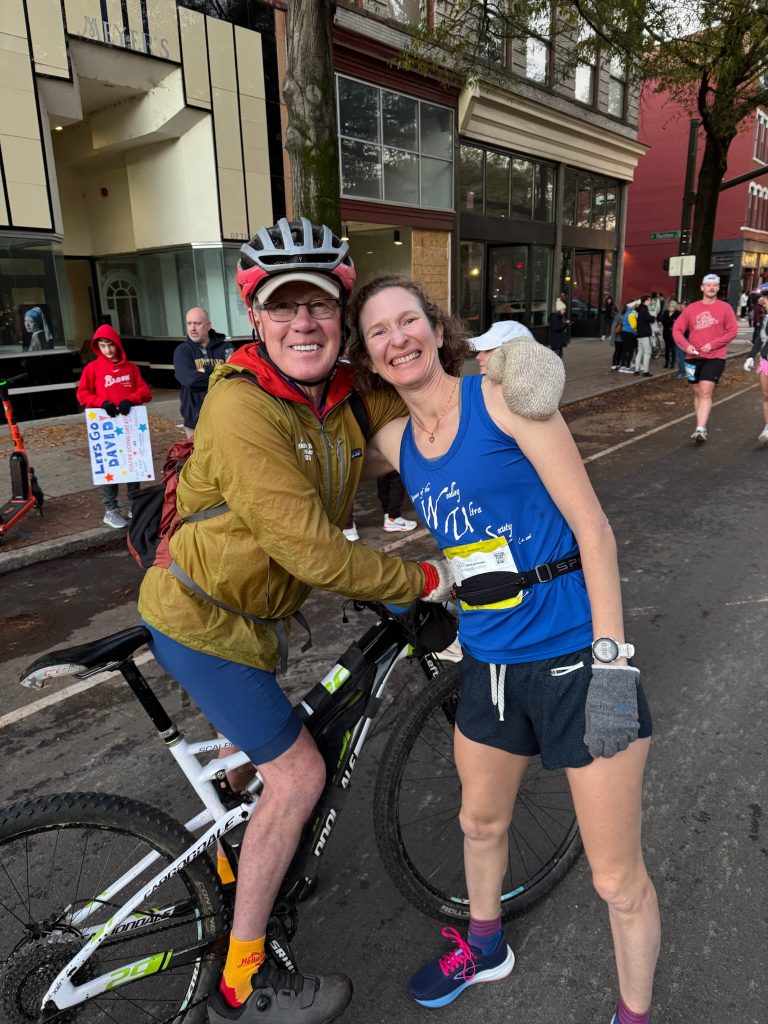

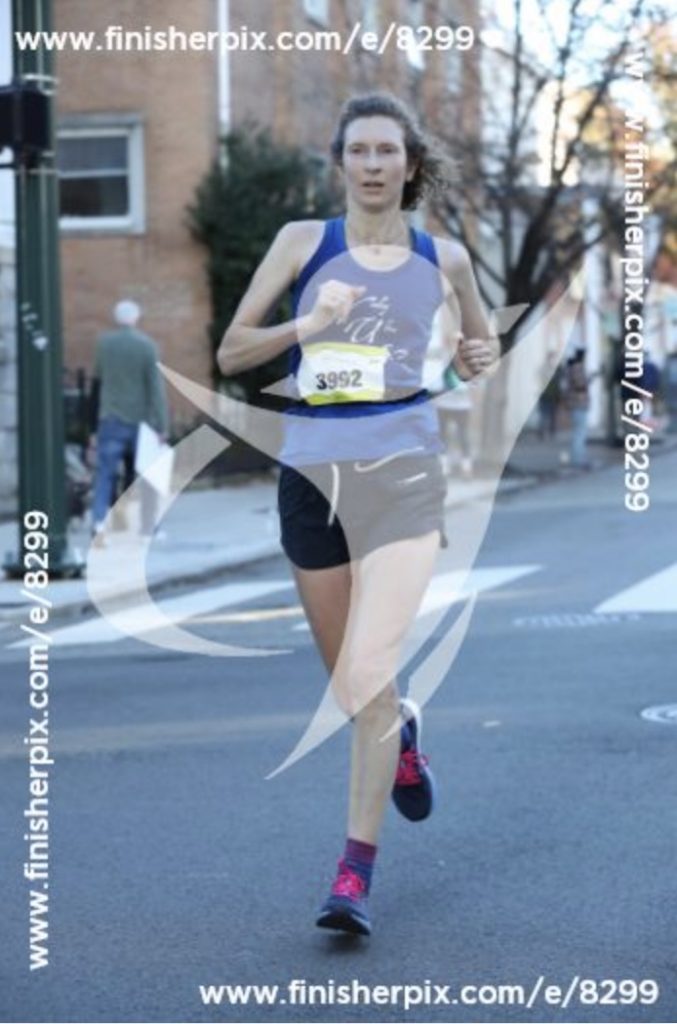
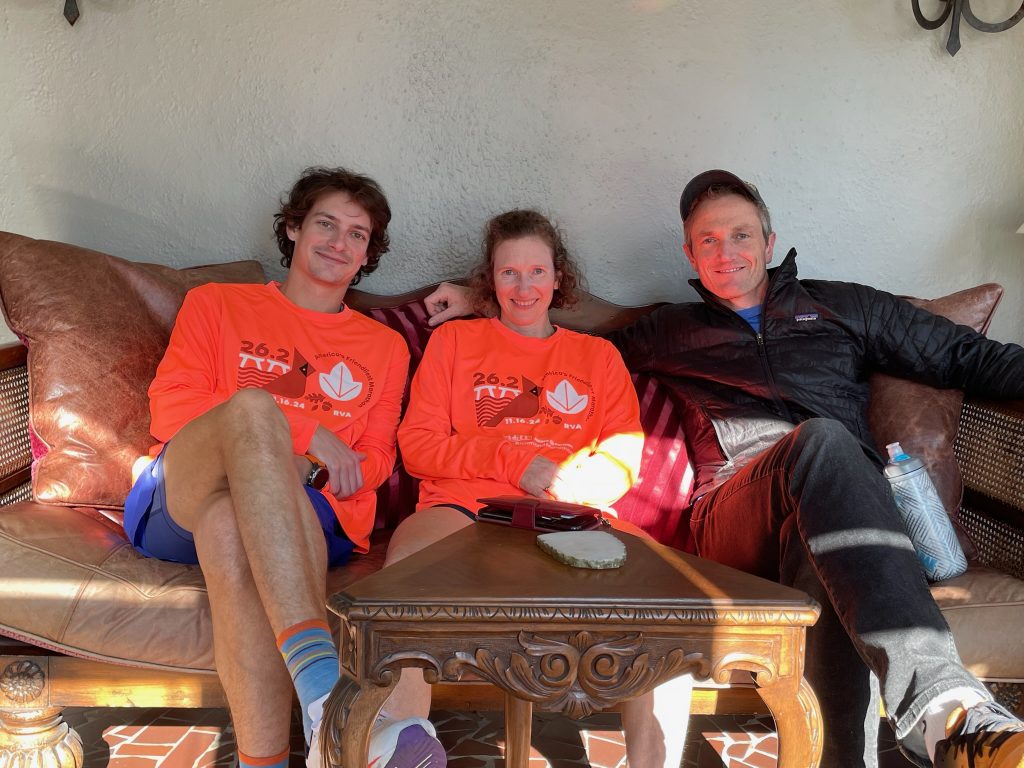
The new dot on the plot is satisfying, not just because I met my goal and reversed the downward skid of middle age, but because I had to actually train to get there. Sean is still a little frightened by this new marmot who trains. I’m a little frightened myself. Not Aaron, though, who’s been waiting for this upgraded version of me for a long time.
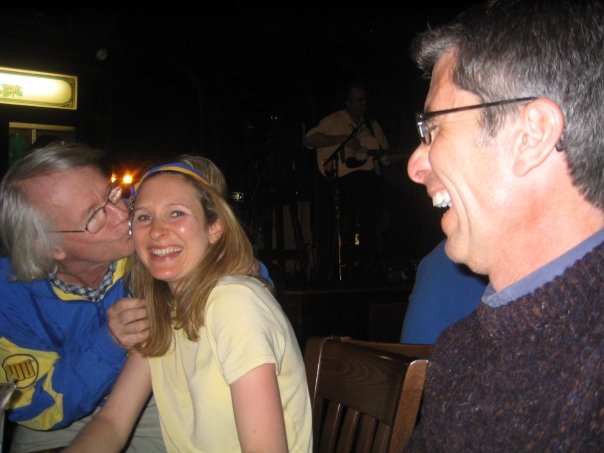
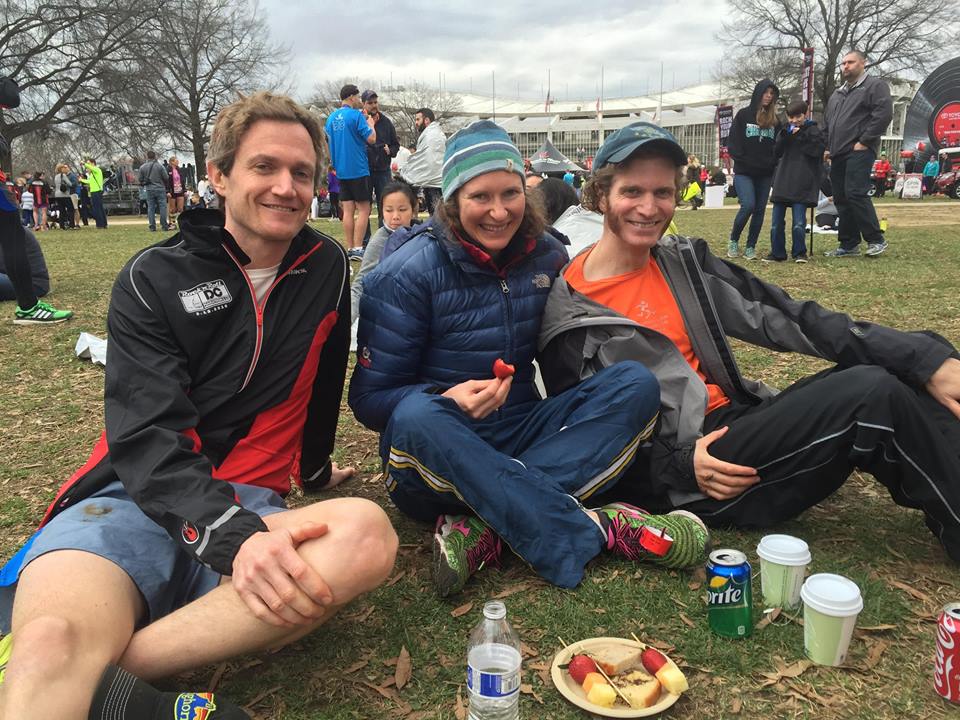




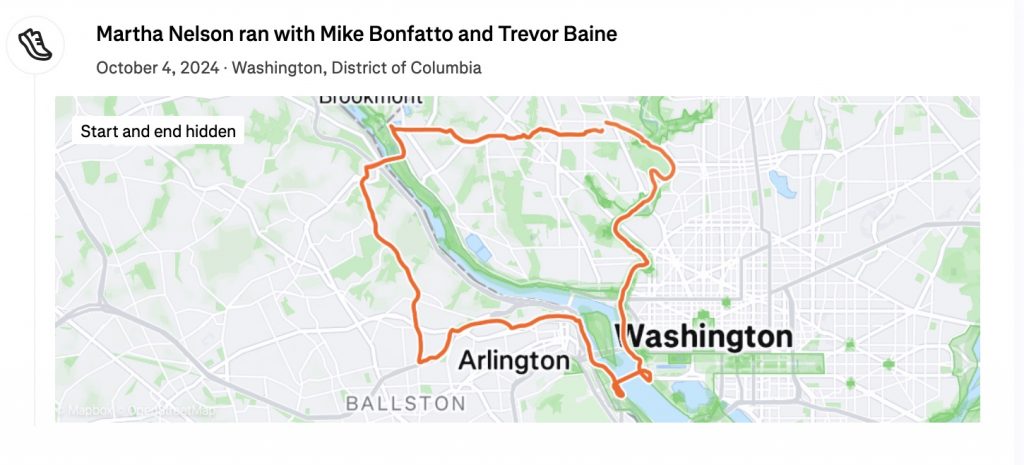



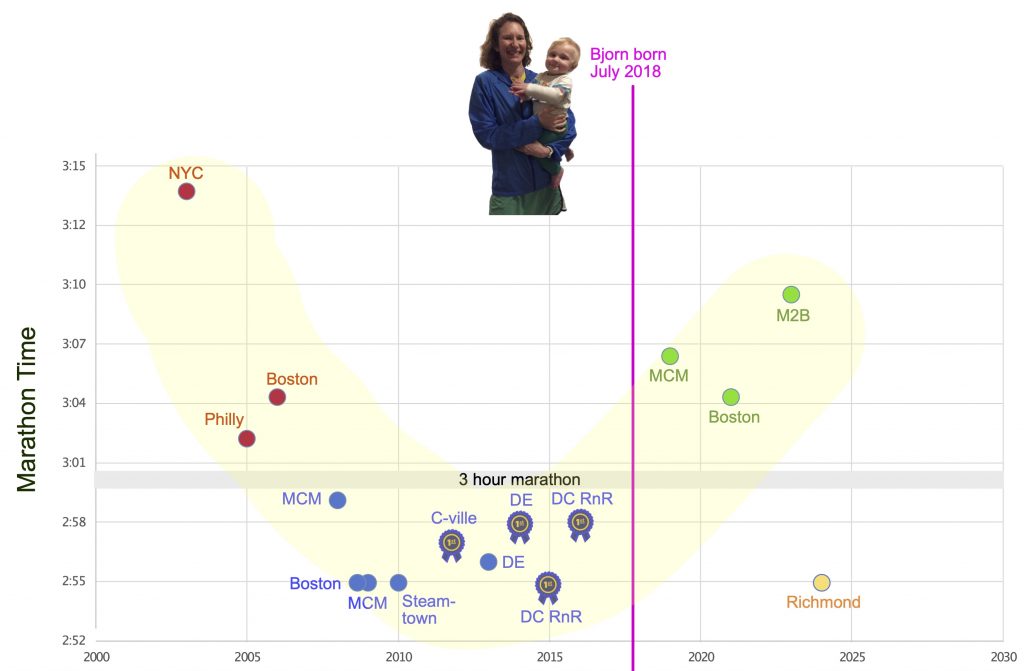
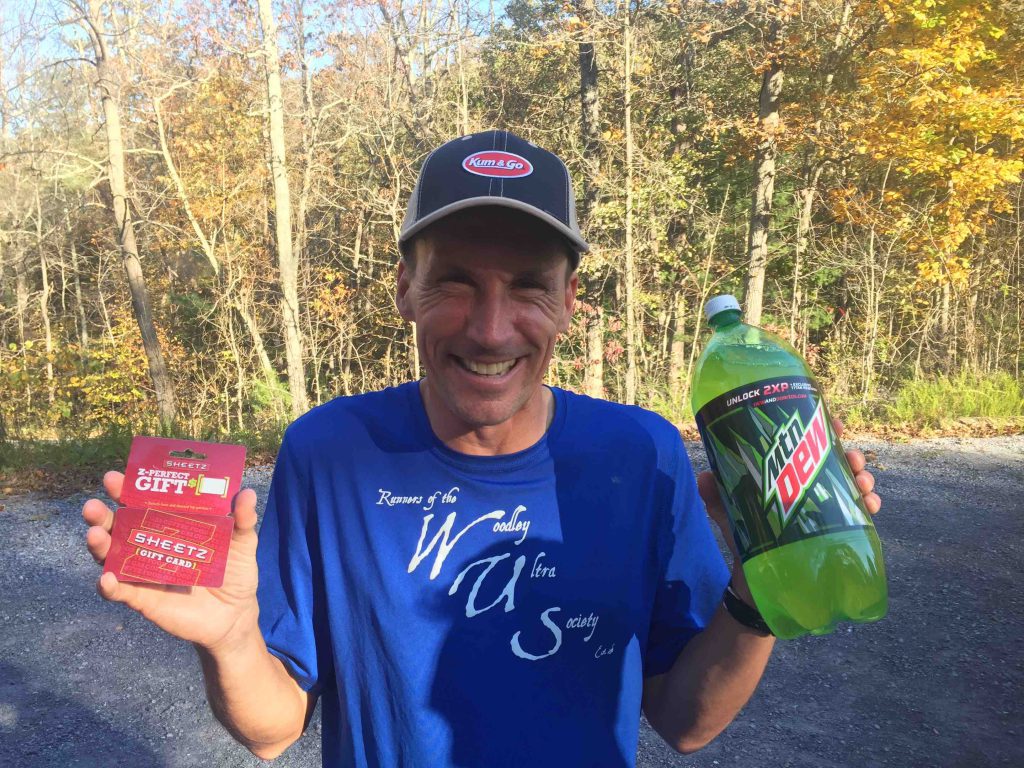
As always, great read Martha! I’ve missed your race reports.
Hooray for a Martha blog post! Life was so much better – more connected and INTERESTING when I read blog posts instead of scrolling social media like Twitter (oh how great Twitter was in the beginning!). Bring it back! Maybe I’ll start blogging about mountain biking and hip replacements, ie real life.